I have recently inherited a collection of wooden patterns for various steam engine cylinders, flywheels, etc. These have been sitting in a cardboard box in a garage for at least 25-30years and still look to be in good condition. My question is, what is the best way for me to pack and store these so that they will still be usable if and when I ever get around to having castings made?
You are using an out of date browser. It may not display this or other websites correctly.
You should upgrade or use an alternative browser.
You should upgrade or use an alternative browser.
Storage of wooden patterns
- Thread starter agr
- Start date

Help Support Home Model Engine Machinist Forum:
This site may earn a commission from merchant affiliate
links, including eBay, Amazon, and others.
BobWarfield
Well-Known Member
- Joined
- Dec 27, 2007
- Messages
- 1,151
- Reaction score
- 1
I love old wood patterns. Hang them on the shop walls as decor.
Cheers,
BW
Cheers,
BW
rake60
Well-Known Member
- Joined
- Jul 8, 2007
- Messages
- 4,756
- Reaction score
- 124
Welcome to HMEM agr!
Wooden patterns that have lasted for 25 years have been well protected.
The "Old Book" recommends varnish.
Pattern Varnish
Patterns intended for repeated use are varnished to protect them
against moisture, especially when in the damp molding sand. The
varnish used should dry quickly to give a smooth surface that
readily draws from the sand. Yellow shellac varnish is generally
used. It is made by dissolving gum shellac in grain alcohol. Wood
alcohol is sometimes substituted, but is inferior. The color of the
varnish is commonly changed for covering core prints, in order that
the prints may be readily distinguished from the body of the pattern.
Black shellac varnish is generally used. At least three coats of varnish
should be applied to patterns, the surfaces being rubbed down with
sandpaper after applying the preliminary coats, in order to obtain a
smooth surface.
Wooden patterns that have lasted for 25 years have been well protected.
The "Old Book" recommends varnish.
Pattern Varnish
Patterns intended for repeated use are varnished to protect them
against moisture, especially when in the damp molding sand. The
varnish used should dry quickly to give a smooth surface that
readily draws from the sand. Yellow shellac varnish is generally
used. It is made by dissolving gum shellac in grain alcohol. Wood
alcohol is sometimes substituted, but is inferior. The color of the
varnish is commonly changed for covering core prints, in order that
the prints may be readily distinguished from the body of the pattern.
Black shellac varnish is generally used. At least three coats of varnish
should be applied to patterns, the surfaces being rubbed down with
sandpaper after applying the preliminary coats, in order to obtain a
smooth surface.
Powder keg
Well-Known Member
- Joined
- Oct 10, 2007
- Messages
- 1,091
- Reaction score
- 3
How bout some Pictures?
Wes
Wes
PolskiFran
Well-Known Member
- Joined
- Dec 7, 2007
- Messages
- 61
- Reaction score
- 0
At work our patterns are hung from racks. They are stored in the shop basement. It does get hot and cold with the weather, but they are kept dry. They are all coated with a grey coating (I don't know the correct name) at the casting, gate and sprue. The board is coated wth a shellac.
I'm not a pattern maker, but I hope this helps.
Frank
I'm not a pattern maker, but I hope this helps.
Frank
compound driver 2
Well-Known Member
- Joined
- Jan 3, 2008
- Messages
- 207
- Reaction score
- 1
Hi
Just keep them dry and at a stable temperature as with anything made of wood.
Most of mine are kept in the house in a cardboard box, some i made 20 years ago look a bit rough but the joints have not moved.
Pattern paint either the red stuff or gray is reasonably water proof or atleast the old stuff was.
Cheers Kevin
Just keep them dry and at a stable temperature as with anything made of wood.
Most of mine are kept in the house in a cardboard box, some i made 20 years ago look a bit rough but the joints have not moved.
Pattern paint either the red stuff or gray is reasonably water proof or atleast the old stuff was.
Cheers Kevin
As requested by Powderkeg I have attached some photos of the patterns. I can identify some of them. The collection with the flywheel are for the 1 1/2" scale traction engine build by my Great Uncle and finished by my grandfather. Some of the others are for two stroke IC engines, and the larger cylinder pattern (second image) was used in converting a BSA motorbike engine into a steam generating plant.
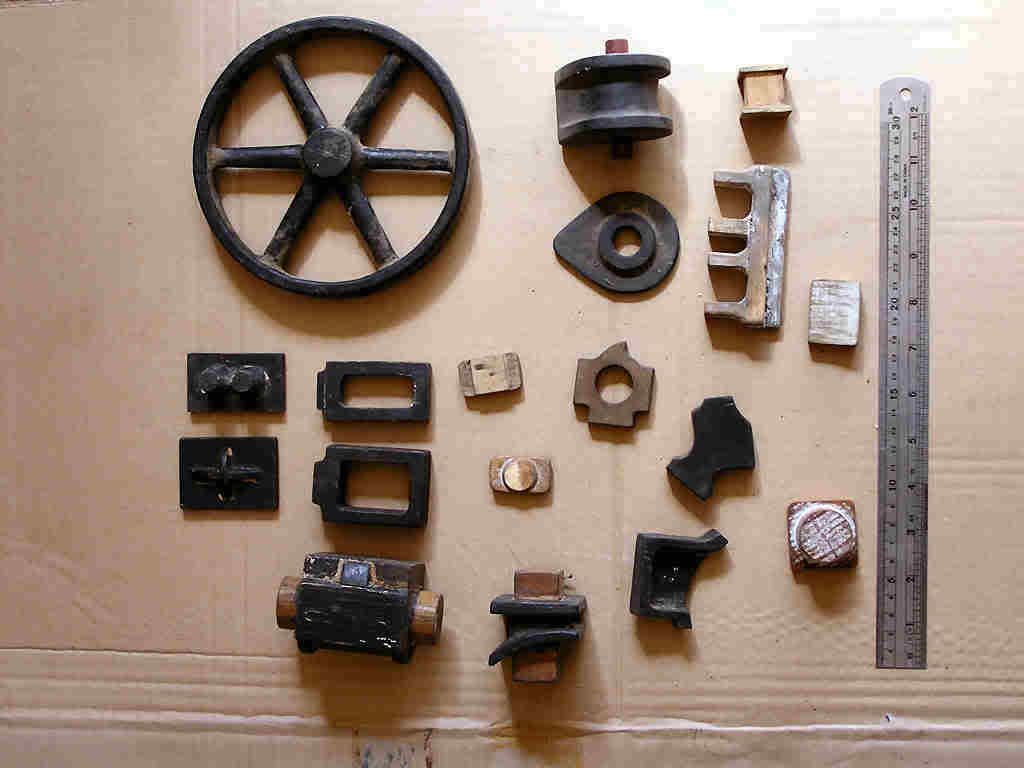
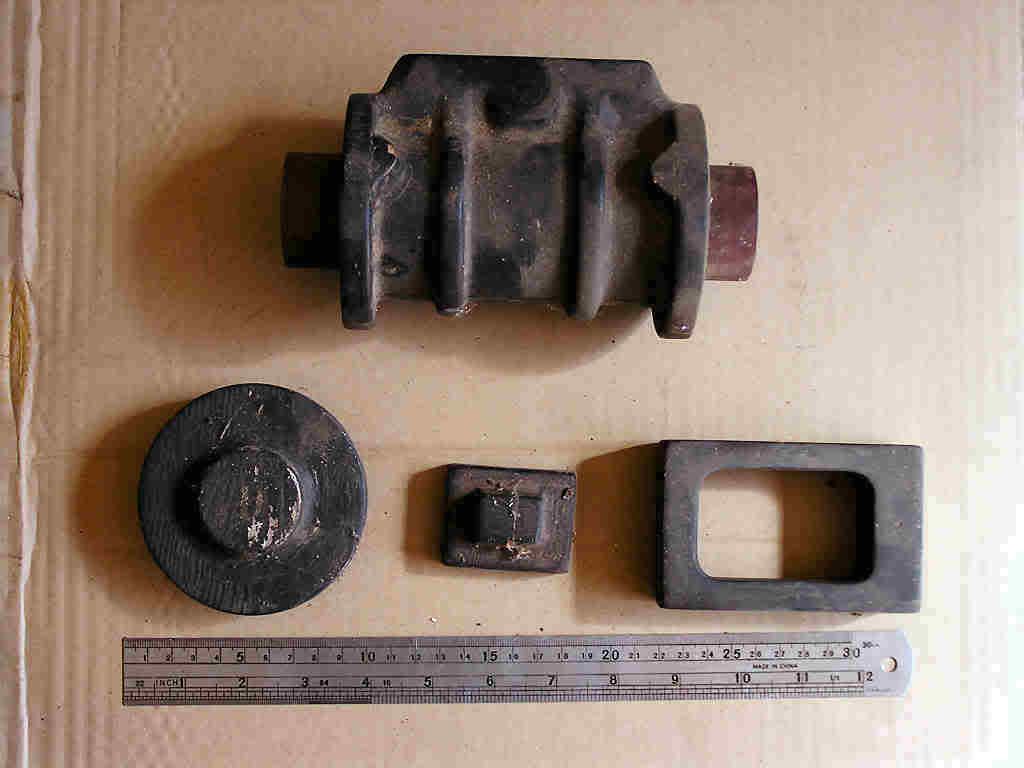
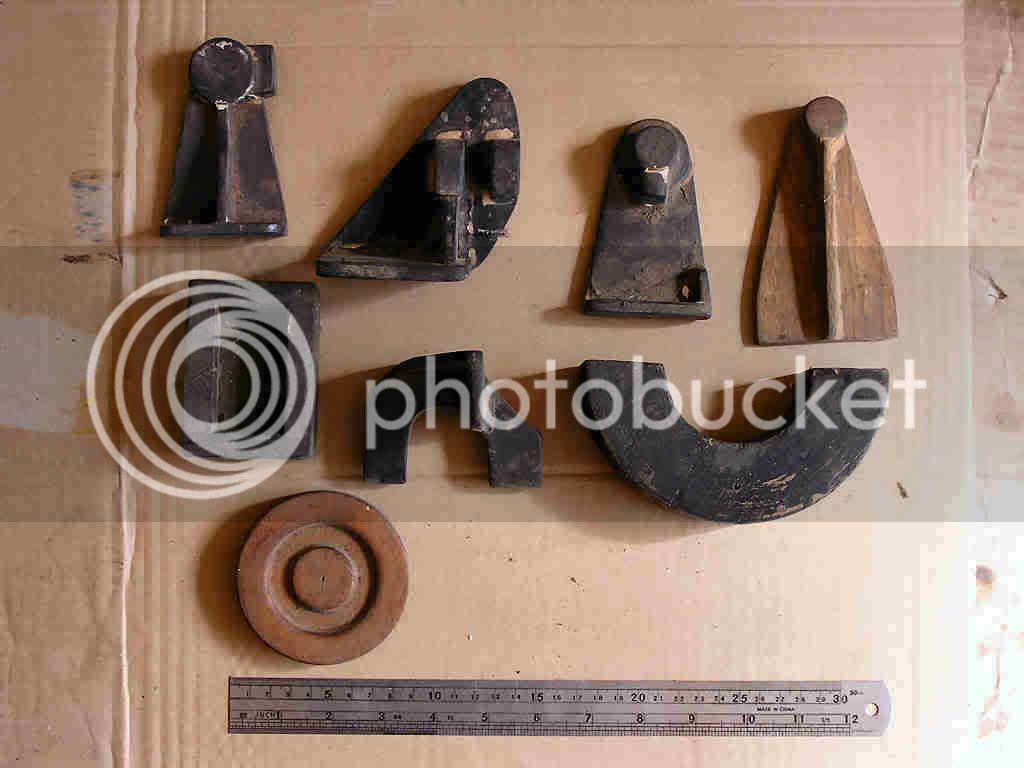
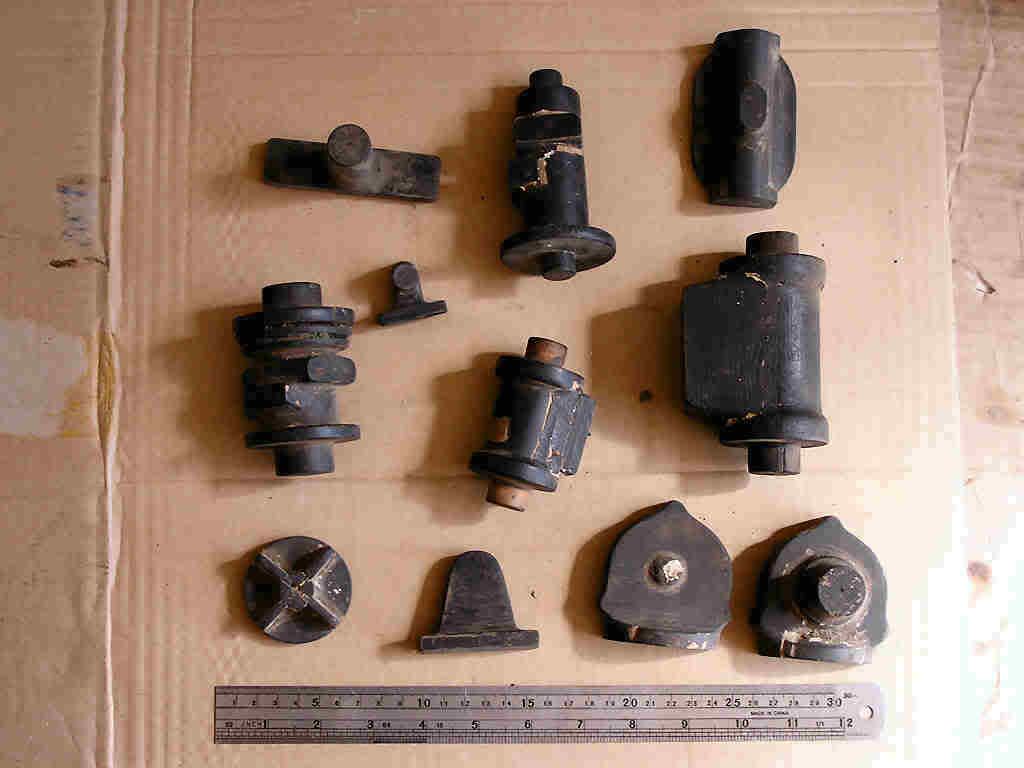
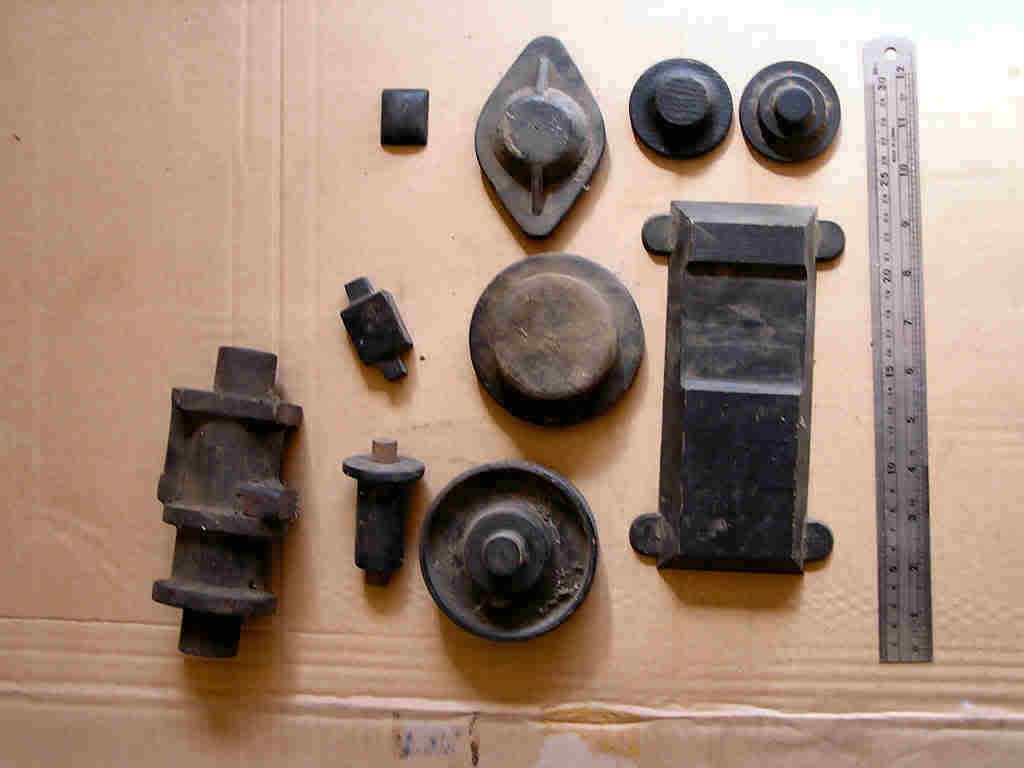
Thanks for all the advise re their storage - I plan to give them all a fresh coat of varnish as suggested and store them away somewhere safe (Hopefully somewhere I'll remember).
Tony.





Thanks for all the advise re their storage - I plan to give them all a fresh coat of varnish as suggested and store them away somewhere safe (Hopefully somewhere I'll remember).
Tony.
Hi there, I just wanted to say here, being a woodworker, that a really good way to preserve small parts,is to soak them with balsawood glue, (model aeroplane glue), heavily diluted with acetone, this penetrates very deeply, hardens the wood and is even good with rotten or woodwormed sections of old furniture etc. ,shellac is ok but the alcohol evaporates too quickly for it to penetrate very far ,most normal varnishes won't go in more than a couple of thou (you can see with a sharp knife) and they won't make the piece completely waterproof so you can get some distortion with time, even better is to leave the bits in the glue acetone solution for a day or so in a closed container and then take them out to dry
Giles
Giles
- Joined
- Jul 8, 2007
- Messages
- 628
- Reaction score
- 14
I worked in a foundry pattern shop and we simply painted them with black lacquer paint .
While there I learned to brush paint as smooth as glass, the trick was to keep your brush wet and never go back over a place a second time when wet.
While there I learned to brush paint as smooth as glass, the trick was to keep your brush wet and never go back over a place a second time when wet.
Similar threads
- Replies
- 151
- Views
- 28K



